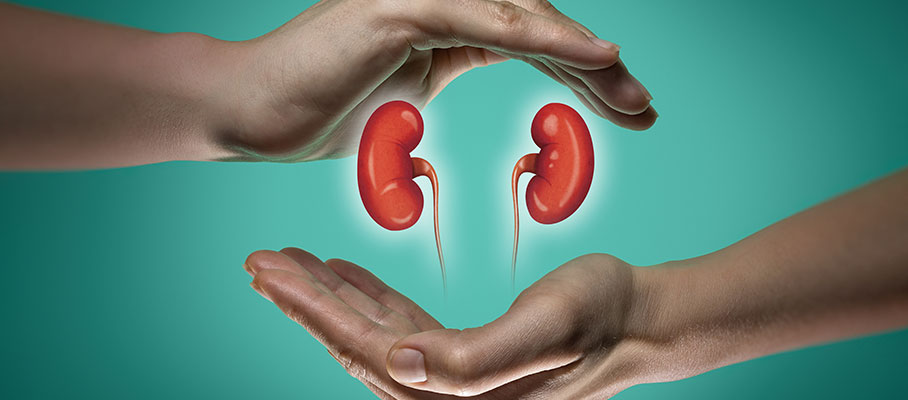2) This #accredited #tweetorial series on #kidneydisease #DKD through the lens of #T2D is supported by an independent educational grant from the Boehringer Ingelheim/Lilly Alliance and is intended for healthcare providers.
— @CKD_ce (@ckd_ce) August 31, 2022
4) Let’s start with a case!
— @CKD_ce (@ckd_ce) August 31, 2022
Your 1st clinic appointment is a 68♀️ with long standing (15 years) Type 2 Diabetes (#T2D), complicated by retinopathy and Chronic Kidney Disease (#CKD). Her most recent laboratory data were obtained 3 months & 2 weeks prior to this visit: pic.twitter.com/h9EDSjN3CK
6) Before diving in the answer, let’s define the risk factors for developing #CKD in patients with #T2D.
— @CKD_ce (@ckd_ce) August 31, 2022
These have been defined as susceptibility, initiation & progression factors that affect hemodynamic, metabolic, inflammatory & fibrotic pathways
🔓https://t.co/alxCVztTr9 pic.twitter.com/dnvZ83ZbAn
8) The #UKDPS study has informed understanding of #CKD progression in #T2D:
— @CKD_ce (@ckd_ce) August 31, 2022
➡️15 yrs after diagnosis, 40% of participants developed albuminuria
➡️30% developed eGFR< 60 ml/min per 1.73 m2 or doubling of the serum creatinine
🔓https://t.co/XDL4enyebs
🔓https://t.co/tVayJcqwvD
10) How should we assess albuminuria & integrate this lab test into our clinical risk assessment?
— @CKD_ce (@ckd_ce) August 31, 2022
It all starts with a simple measurement!
👉Measurement of the urine albumin-to-creatinine ratio (#UACR) in an untimed urinary sample is the preferred screening strategy in #T2D
12) Practice Points:
— @CKD_ce (@ckd_ce) August 31, 2022
✔️ Prefer a quantitative over a dipstick test
✔️If a patient who has had previously normal values, develops UACR >30mg/g, the test should be repeated 2x over a 3-6mo period
✔️UACR 30-300mg/g ➡️moderate albuminuria
✔️UACR > 300 mg/g ➡️ severe proteinuria pic.twitter.com/ggkIoqqgFw
14) Data from the 701 participants in RENAAL were used to probe the predictive ability of different measures of proteinuria
— @CKD_ce (@ckd_ce) August 31, 2022
🔓https://t.co/eFZc5fAZzQ
✔️ (U)ACR in FMV
✔️Urine Albumin Concentration in FMV
✔️24hr Urine Albumin Excretion (#UAE)
✔️24hr Urine Protein Excretion (#UPE)
16) RENAAL is not the only study that has linked measures of proteinuria/albuminuria with #CKD progression and #ESKD in patients with depressed eGFR. Enter the CRIC (Chronic Renal Insufficiency Cohort) Study: 🔓https://t.co/8Q6607H0Pp
— @CKD_ce (@ckd_ce) August 31, 2022
👉Albuminuria determined BOTH outcomes pic.twitter.com/ZttROCp6Ta
18) While the previous studies examined the baseline #albuminuria as predictor of risk, the more relevant scenario for clinical practice is one in which multiple measurements of #eGFR & baseline albuminuria are available for dynamic risk assessment about #CKD progression.
— @CKD_ce (@ckd_ce) August 31, 2022
20) To sum up:
— @CKD_ce (@ckd_ce) August 31, 2022
✔️Albuminuria (preferably measured as a FMV UACR) is a continuous measure of risk for #CKD progression among pts w/ #T2D
✔️Risk is particularly high for UACR > 300mg/g
✔️ eGFR (& changes in eGFR) are also associated with progression risk
It is now time to …
22) Similar heatmaps also apply to the other risks associated with #CKD:
— @CKD_ce (@ckd_ce) August 31, 2022
✔️All-cause Death
✔️Cardiovascular Death
✔️Progression of #CKD
✔️#ESKD/#ESRD
✔️Acute Kidney Injury
🔓https://t.co/VfjUc8FFGB
But nowadays we can go beyond such semiquantitative risk stratification! pic.twitter.com/dCwVNpbS9I
24) There are two versions of this risk calculator:
— @CKD_ce (@ckd_ce) August 31, 2022
➡️4 Variable: Age, Sex, eGFR, UACR
➡️8 Variable. Which of the following is NOT one of the additional 4 variables in the 8-variable model?
26) Welcome back! We're talking about risk stratification for #T2D+#DKD to➡️#CKD. I am @ChristosArgyrop & you're earning CE/#CME! 👏 @dguerrot @kdjhaveri @AtulPathak31 @lissabauer @sophia_kidney @RpratleyMD @nephondemand @NephroWorldCup @edgarvlermamd @SeguraCardio @kamleshkhunti
— @CKD_ce (@ckd_ce) September 1, 2022
28) ✔️Both formulas include an adjustment for geography
— @CKD_ce (@ckd_ce) September 1, 2022
✔️ 8V formula may discriminate better
🔓https://t.co/Wdwfe8H9dX pic.twitter.com/FagYQpfTeX
30) Having a number helps our patients understand their risks. But we can also use this number to *reduce* their risk. In this case (68👩🦳, with #eGFR of 45 & #UACR ~500mg/g), proteinuria is the only modifiable risk factor. If the latter were to ⬇️ 100mg/g, the #KFRE yields: pic.twitter.com/BGFF2dwIjf
— @CKD_ce (@ckd_ce) September 1, 2022
32) What did these re-analyses of #RENAAL, #IDNT, #OVERT show?
— @CKD_ce (@ckd_ce) September 1, 2022
✔️Changes in albuminuria in the first 6mo of therapy predict long term response:
👉⬇️albuminuria by 50% ➡️⬇️#ESKD by 45%
👉risk⬇️ was continuously related to albuminuria ⬇️
✔️risk highest in those with highest UACR pic.twitter.com/xL3ZmzIQfK
34) AKI, low eGFR & Albuminuria are ALL predictors of #CKD progression
— @CKD_ce (@ckd_ce) September 1, 2022
🔓https://t.co/Hsmk1ud1Ak
✔️AKI⬆️risk by 247%
✔️Albuminuria⬆️risk by 423%
✔️⬇️eGFR by 10 ml/min/1.73m2⬆️risk by 22%
Maladaptive responses inside the kidney underline this nexus
🔓https://t.co/LE19aVw1eh pic.twitter.com/DFdp48XjAe
36) The Renoprotection of Optimal Antiproteinuric Doses (ROAD) study: effects of individualized maximization of ACEi or #ARB doses on #CKD progression & #ESKD.
— @CKD_ce (@ckd_ce) September 1, 2022
Titration
👉risk⬇️by ~50%
👉proteinuria⬇️by ~20%
👉slower eGFR loss
👉no⬆️effect on BP
🔓https://t.co/7PT7Q2nQ4l pic.twitter.com/QY6DWi6f1i
38) Wrapping up the case of our patient w/ #T2D, she is at high risk for #CKD progression because of:
— @CKD_ce (@ckd_ce) September 1, 2022
✔️residual albuminuria
✔️low eGFR
✔️submaximal dose of lisinopril
✔️prior AKI
What if albuminuria persists after⬆️lisinopril or if the patient can't tolerate the higher dose?
40) To date, #SGLT2i #flozins (#canagliflozin and #dapagliflozin) and novel, nonsteroidal #MRAs (#finerenone) have been approved as nephroprotective agents by enrolling patients with residual albuminuria, depressed eGFR on maximally tolerate doses of ACEis/ARBs. pic.twitter.com/igPWw9NSfN
— @CKD_ce (@ckd_ce) September 1, 2022
42) Take-home Points 1⃣:
— @CKD_ce (@ckd_ce) September 1, 2022
💡Albuminuria (pre therapy, or residual after initiation of inhibitors of the Renin Angiotensin system) predicts risk for #CKD progression in pts w/ #T2D
✔️risk tools (KDIGO heatmap/#KRFE) to visualize & quantitate risk when communicating with patients
44) And with that, you just earned 0.5hr CE/#CME! #physicians #physicianassociates #nursepractitioners #nurses #pharmacists Go to https://t.co/NhfbHbK61Y to claim it. I am @ChristosArgyrop. FOLLOW US here & on @cardiomet_ce for more programs by expert authors in this space! pic.twitter.com/4fuU52Q3mi
— @CKD_ce (@ckd_ce) September 1, 2022
